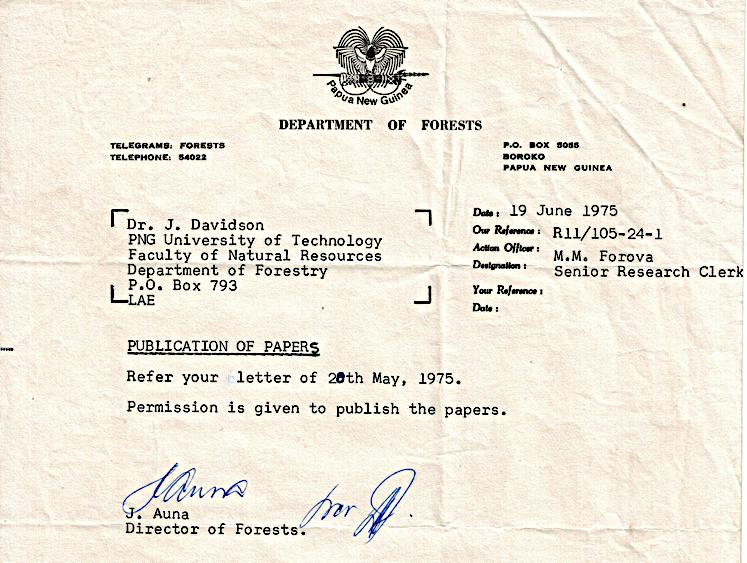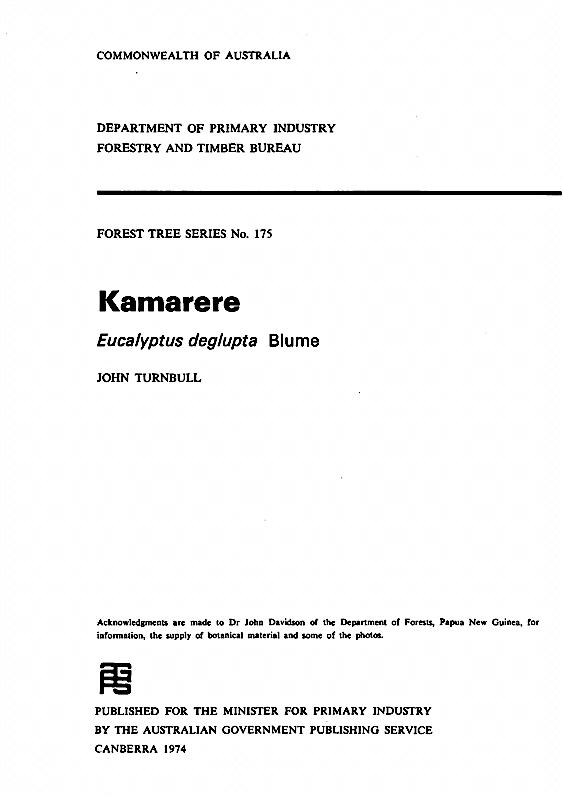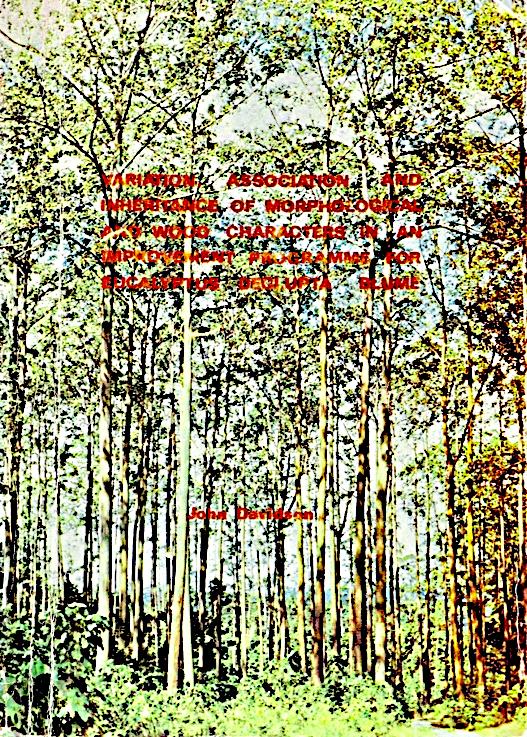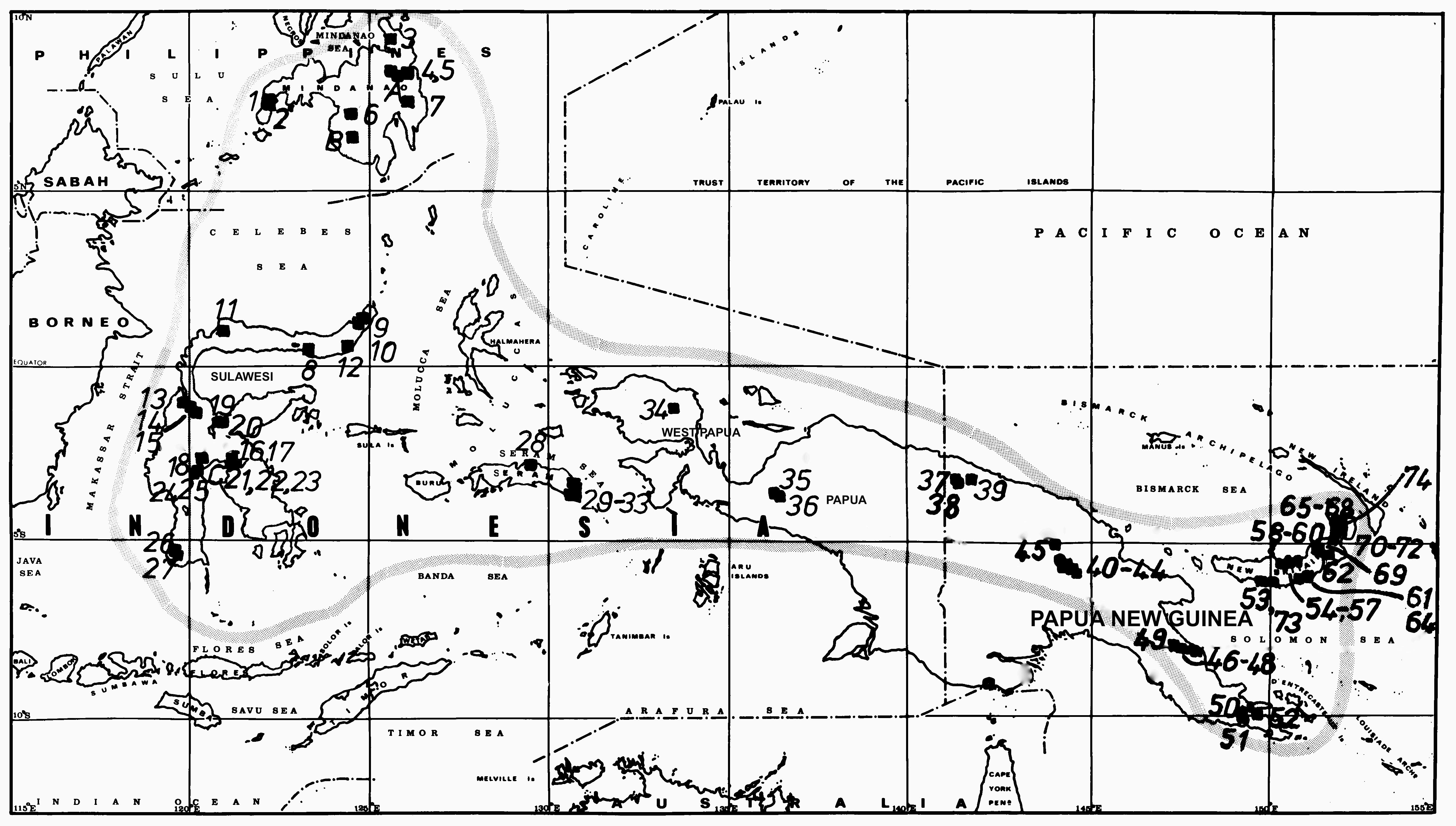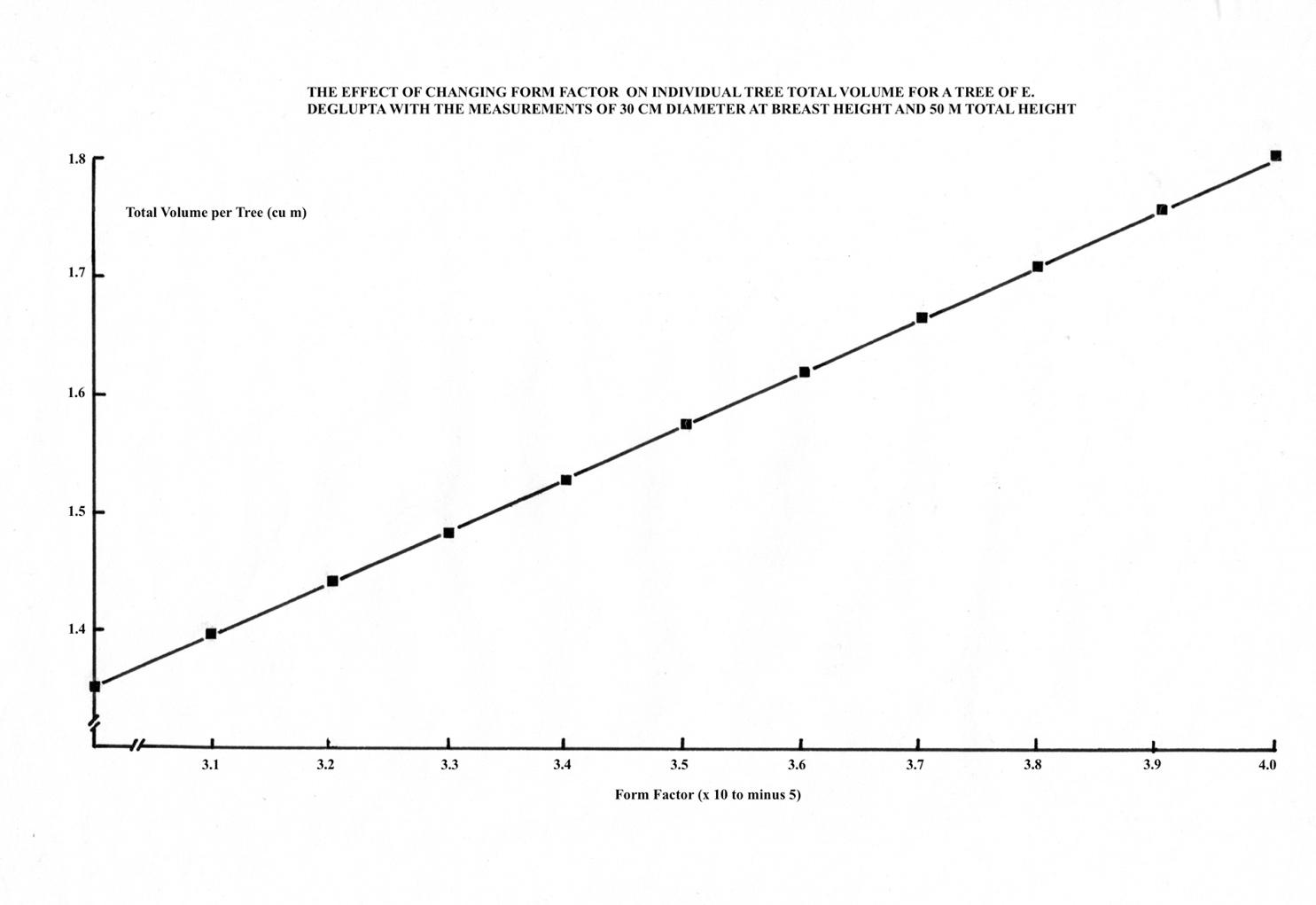
3 minute read
Assessment of E. deglupta provenance trial No 2, Keravat, New Britain in 1974 at age 2 years
from PNGAF MAG ISSUE # 9 B-5B4D3 Dr John Davidson Accompaniment "RAINBOW EUCALYPT MAN" Part 6 of 8 parts
by rbmccarthy
Assessment of E. deglupta provenance trial No 2, Keravat, New Britain in 1974 at age 2 years
The E. deglupta provenance trial No 2 at Keravat, New Britain established in 1972 was assessed just prior to thinning at age about 2 years. Wilelo provenance from New Britain (PNG seedlot no. 325) was the best for wood volume production. Philippines No. 1 (PNG seedlot 260, FRI Canberra combined seedlots nos S9291/9292) from Caliwan River, Davao del Norte Province and south of Bislig Bay, southern Surigao del Sur Province, Mindanao was second for wood volume production. There was a noticeable difference between the dark green foliage of the New Britain provenance and the slightly glaucous foliage and stems of the Philippines provenance. Third-placed was Keravat (PNG seedlot 260, FRI Canberra seedlot S8861) and fourth-placed Philippines 2 (PNG 281, FRI S9408 Milbuk, Cotabato Province). There was statistically no significant difference among the best four provenances.
Advertisement
Mindanao locations are shown at the time of the E. deglupta provenance seed collections were made. Modern day provincial boundaries and names in Mindanao are substantially different. Seed collection locations were: Philippines No. 2 (PNG 281, FRI S9408) Milbuk, Cotabato Province (location shown by * and numeral 1 on map); Philippines No. 1 (PNG seedlot 260, FRI Canberra combined seedlots Nos S9291/9292) from Caliwan River (a tributary of the Agusan River), Davao del Norte Province (* and 2) and south of Bislig Bay, southern Surigao del Sur Province (* and 3).
Next to worst was Mingende (PNG 206 to 209 combined, from 2,500 m altitude) and the worst was Raba Raba (PNG 346, FRI S8863). There was statistically no significant difference among the worst three provenances (Mingende, Raba Raba and Palopo, Southern Sulawesi, Indonesia (the latter PNG 265, FRI S9313).
However, there was a significant statistical difference between the top four provenances as a group and the bottom three provenances as a group.

E. deglupta provenance trial No 2, Keravat, New Britain in 1974 age about 2 years, before thinning. On the left is Wilelo provenance from New Britain (PNG seedlot no. 325), the best provenance for wood volume production. On the right is Philippines No. 1 (PNG seedlot 260, FRI Canberra seedlots nos S9291/9292) from Caliwan River and south of Bislig Bay, Mindanao, second for wood volume production. There was a noticeable difference between the dark green foliage of the New Britain provenance on the left and the slightly glaucous foliage and stems of the Philippines provenance on the right when grown sid-by-side.

A comparison between third placed Keravat (PNG seedlot 260, FRI Canberra seedlot S8861) (left) and fourth placed Philippines 2 (PNG 281, FRI S9408 Milbuk, Cotabato Province) after thinning. In the background, on the left, was the next to worst Mingende (PNG 206 to 209), on the right the worst Raba Raba (PNG 346, FRI S8863). There was statistically no significant difference among the best four provenances.
The same E. deglupta provenance trial No 2, Keravat, New Britain in 1974, age about 2 years and un-thinned. On the left is the next to worst Mingende provenance (PNG 206 to 209 combined, from 2,500 m altitude) and on the right the worst Raba Raba (PNG 346, FRI S8863). There was statistically no significant difference among the worst three provenances (these two and Palopo, Southern Sulawesi, Indonesia (PNG 265, FRI S9313).




